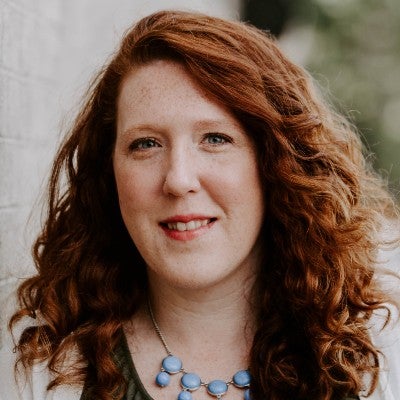Home insurance is a collection of coverages that can help you cover the cost of damage to your property and the loss of your personal belongings after an unexpected covered event like a fire or a break-in. It also provides financial coverage if you or a household member is found legally responsible, or liable, for property damages or bodily injuries sustained by a third party.
Home insurance is usually broken down into multiple parts, with each part covering a specific type of loss, such as the structure of your home, your personal property, or a third party’s medical bills. Each part of a standard home insurance policy carries its own coverage rules, exclusions, and limits, or the maximum amount of money an insurer will pay for a specific claim.
These are the most common components of a standard homeowners insurance policy and how they work.
What are the standard home insurance coverages?
Dwelling coverage (Coverage A)
Also called dwelling insurance, this part of your policy covers the cost of rebuilding or repairing your home's primary physical structure, including the foundation, walls, floors, roof, attached decks or garages, and chimneys. Coverage also typically extends to permanently installed building components or systems, such as countertops, cabinets, or household HVAC systems.
Dwelling insurance usually covers several damaging-causing events, also known as “perils.” This includes:
-
Fire or smoke
-
Hurricane
-
Hail
-
Lightning
-
Explosion
-
Water damage caused by burst pipes or overflowing household appliances
-
Theft
-
Vandalism
-
Falling objects
-
Weight of ice, snow, or sleet
-
Impact by aircraft or land vehicle
-
Riots
Other structures (Coverage B)
Other structures insurance protects structures on your property that are not physically connected to your house.
This may include:
Other structures insurance usually covers the same events included in your dwelling coverage.
Personal property (Coverage C)
Personal property insurance, also known as contents coverage, is the part of your policy that helps repair or replace your possessions if they are destroyed, damaged, or stolen during a covered event.
The list of covered items may include:
-
Furniture
-
Clothing
-
Electronics, such as TVs, laptops, cameras, and video game consoles
-
Jewelry
-
Books and music
-
Tools
-
Dishes and cookware
-
Recreational gear
Personal property coverage typically operates under a named perils basis, meaning your property is only covered when damage is caused by an issue expressly stated in your policy. Though policies differ, named perils often include:
-
Fire
-
Theft
-
Vandalism
-
Windstorms
Loss of use (Coverage D)
If your house becomes uninhabitable due to a covered event, loss of use insurance — sometimes also known as additional living expenses (ALE) coverage — can help cover extra costs you may incur while your home is repaired.
The list of covered living expenses usually includes:
-
Temporary accommodation, such as a hotel, motel, or apartment
-
Transportation costs, such as public transit fares
-
Pet boarding
-
Grocery or restaurant costs that exceed your regular level of expenditures
-
Temporary relocation costs of your personal belongings
-
Laundry expenses
-
Parking fees
This portion of your policy usually offers coverage for 12 months or the amount of time it takes to make your home habitable again – whichever comes first. Further, your ALE coverage will likely include a daily or total limit, generally a percentage of your dwelling coverage.
Note that coverage D only covers the excess of what you’d typically spend on certain things, like meals or housing. For example, while living in your home, you may spend $300 per week on groceries; however, while staying in temporary housing, you spend $500 a week at restaurants or takeout orders. Your policy will cover the difference — in this case, $200.
Personal liability (Coverage E or Coverage L)
Personal liability insurance provides financial protection if you or a household member is held legally responsible for causing property loss or bodily harm to someone else. For example, suppose a guest is injured on your property due to your negligence. Personal liability insurance can cover their medical bills if they end up in the hospital and your legal expenses if the injured party sues you.
Expenses usually covered include:
-
Repairs if you or a household member accidentally damage someone's property, such as a window or fence
-
Medical bills if someone is accidentally injured on your property
-
Medical bills if you or a household member is liable for the accidental injury of someone at another location
-
Legal defense, judgments, and settlements if you’re sued due to the incidents above
-
An injured party’s loss of wages
Medical payments (Coverage F or Coverage M)
Medical payments coverage, also known as MedPay or medical payment insurance, can help pay for minor injuries that may happen to a guest on your property, regardless of who is responsible for the accident.
For example, if one of your son’s friends breaks their wrist while playing tag in your backyard, this coverage can help with their medical bills up to the limits of your policy. This can help you avoid filing a personal liability insurance claim.
Medical payment insurance usually covers the following expenses:
This portion of your policy — sometimes known as MedPay or “good neighbor” insurance — may also cover minor medical expenses if you, a household family member, or a pet injures somebody away from your home, such as at a park.
Medical payments insurance does not usually cover anyone who pays or receives money to be at your home. Examples of exclusions include technicians performing repairs and tenants renting your property.
What are the standard exclusions that home insurance won’t cover?
Each portion of your homeowners insurance policy comes with standard exclusions — events, expenses, or items your policy won’t cover.
Coverage A standard exclusions
-
Earthquakes/earth movement
-
Floods
-
General wear and tear
-
Lack of regular and proper maintenance
-
Pest infestations
-
War and/or nuclear hazards
-
Intentional loss
-
Smog, rust, corrosion, and rot
-
Settling, expansion, shrinking, or bulging
Coverage B standard exclusions
-
Each of the Coverage A exclusions listed above
-
Detached structures that you use for business purposes
-
Detached structures used for commercial farming or ranching activities
Coverage C standard exclusions
Coverage D standard exclusions
Coverage E/L standard exclusions
-
Intentional damage to someone's property
-
Intentional injuries
-
Damage to household property
-
Claims arising from your business or profession
-
Auto damage or injuries that happen in an auto accident
Coverage F/M standard exclusions
What are the common endorsements for added coverage?
Homeowners insurance endorsements — also known as riders — enhance your policy with optional or additional protection to cover specific perils, conditions, or losses that aren’t usually included.
There are many types of endorsements. These may vary depending on your policy, insurer, and the place where you live — some of them may even be mandatory if they’re required by state law.
These are some of the most common home insurance endorsements. Contact your insurer to learn more about specific endorsements for which your policy may be eligible.
How does home insurance coverage work?
Home insurance works like many other types of insurance.
You buy a policy and start making regular premium payments –annually, biannually, or monthly, depending on the options your insurer offers. In return, when you experience a covered loss, you can file a claim to help you pay for damage-related expenses.
Once you file a claim, your insurer investigates the incident and determines if the damage is covered and, if so, the value of the loss. If the claim is approved, you’ll receive payment for your covered financial losses up to your policy’s limit minus any deductible.
Depending on the terms of your policy and the covered event, home insurance may cover your property in two different ways:
What are the common types of home insurance?
An HO-3 is by far the most common type of homeowners insurance policy. Nearly eight out of 10 home insurance policies issued in the United States are HO-3, according to the National Association of Insurance Commissioners (NAIC).
This type of policy usually covers your dwelling and other structures on an open-perils basis, which means you’re covered for any events except those expressly excluded in your policy.
HO-3 policies typically cover your personal property on a named-perils basis, meaning it only covers damage caused by the perils named in your policy. The same applies to House & Property policies (HD-3), which operate similarly to an HO-3 but with built-in protections for individuals insuring second or vacation homes, renting out their property, or both.
Other types of home insurance include renters insurance (HO-4), condominium insurance (HO-6), and mobile home insurance (HO-7 or MH3).


 Edited by
Jennifer Lobb
Edited by
Jennifer Lobb






